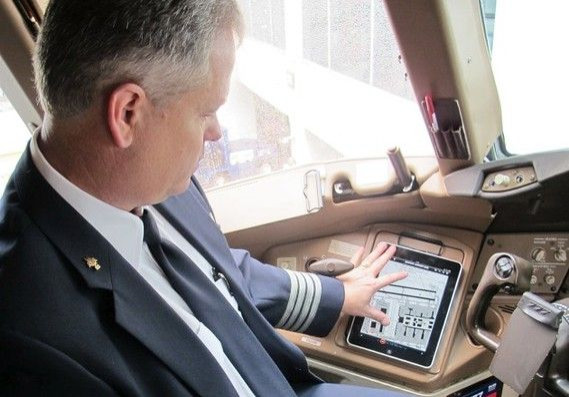How Dangerous Was The American Airlines iPad Malfunction?

American Airlines’ grounding of “a few dozen” flights on Tuesday night when the iPad app used by its pilots during flight crashed before takeoff raises the question: How important are such apps to the safety of a commercial flight? And if they malfunctioned during a flight, what would the consequences be?
The iPads used by American Airlines and most other commercial carriers serve as “electronic flight bags” -- the digital replacement for pilots’ traditional flight bags, which typically contained anywhere from 35 to 40 pounds of documents pilots might need to access in the cockpit. Flight bags typically include aircraft operating manuals, flight manuals, navigational charts, approach procedures and other information that pilots may need to refer to during flight.
But an EFB is “not a fundamental part of the airplane,” said Philip Greenspun, a former regional jet pilot for Delta and a computer science researcher who teaches software engineering at MIT. “It is a replacement for a notebook full of stuff that is nice to have, and required to have, but not essential to safety.”
Dave Powell, dean of the College of Aviation at Western Michigan University, agrees. He said the information in a flight bag, electronic or otherwise, aids pilots during a variety of situations in the air. But as a backup, most pilots would be able to refer to information built into an airplane’s computers, or radio air traffic control for help, if an EFB wasn’t available.
“Some carriers still keep one hard copy on the plane, and each pilot typically has their own tablet,” said Powell, explaining that it’s unlikely that both tablets would fail at the same time.
Of course, in the case of American Airlines on Tuesday night, the software glitch did affect all the iPads in its fleet, but it was likely due to an upgrade -- something that would be checked during preflight preparations, said Greenspun. Neither American Airlines nor Jeppesen, the company that supplied the software, immediately returned requests for information on the exact nature of the software crash.
American Airlines became the first airline to use EFBs in its cockpits for all flights in 2013, after it received approval for its iPad use by the Federal Aviation Administration. (All commercial airlines must go through an FAA review of software and apps before they can deploy them.)
The iPads save American Airlines 400,000 gallons and $1.2 million in fuel a year, the company said, because of the weight eliminated from each flight. United Airlines also uses iPads with Jeppesen software for its EFBs, while Delta Air Lines supplies its pilots EFBs through Microsoft Surface tablets.
Powell, who was a captain at United Airlines for 18 years until he retired in 2003, said he wished that technology had been available when he was flying Boeing 777s. He remembers throwing his back out once while lugging his 35-pound flight bag between flights. Electronic access to those documents would have been more efficient as well, he said, especially because the documents in a flight bag had to be updated on a regular basis.
“This isn’t something passengers should worry about,” said Greenspun. “You don’t need any of that stuff [referring to EFBs] to complete the flight safely. But he added that a simple backup system could be implemented to prevent delays in the future. “They probably should have a system where the old version of the software is still on their tablets in addition to the new version. That way if one failed, they could still access the other.”
© Copyright IBTimes 2024. All rights reserved.





















